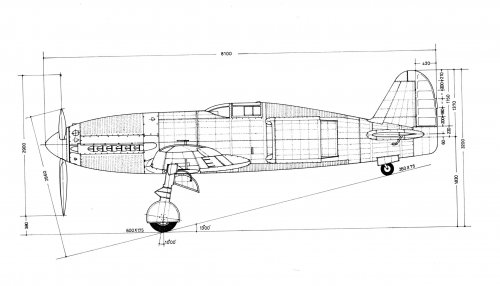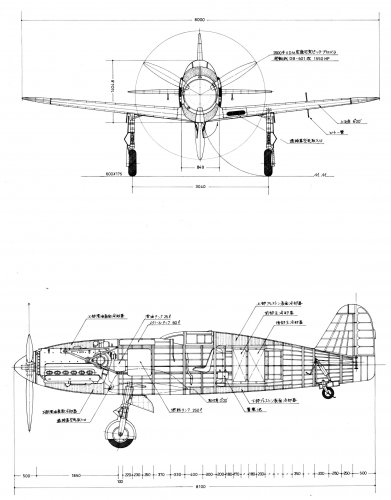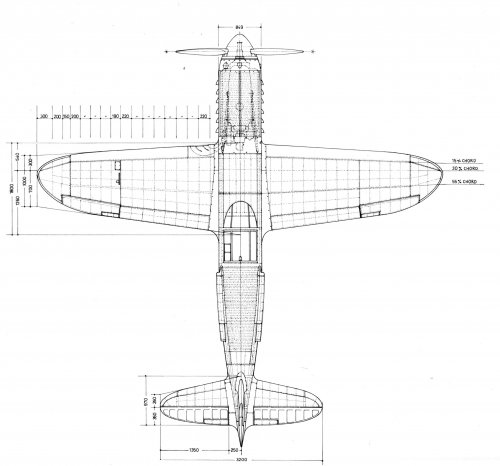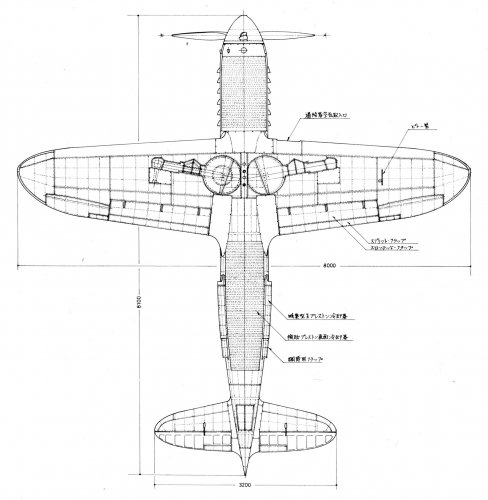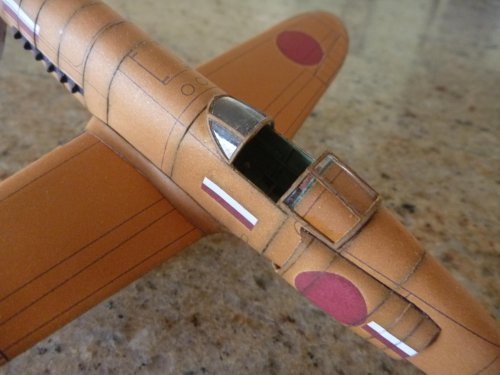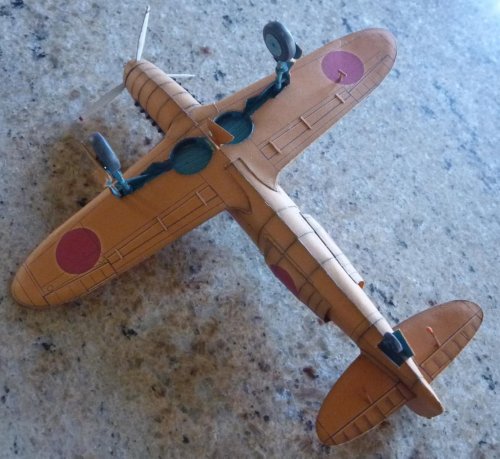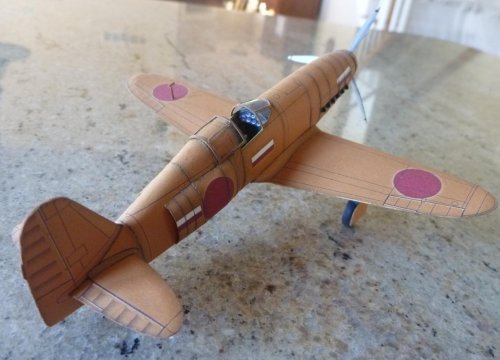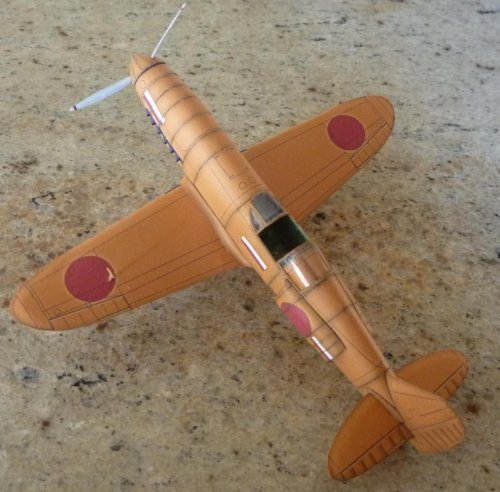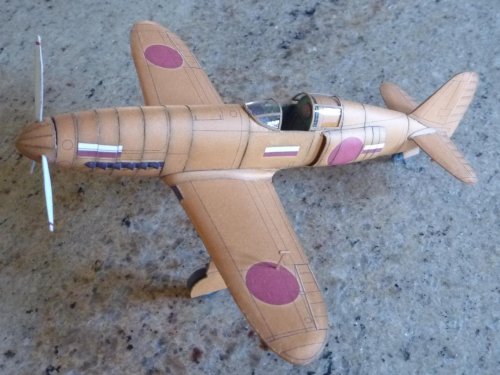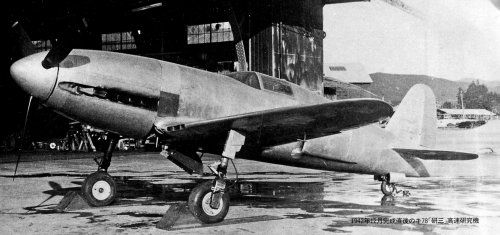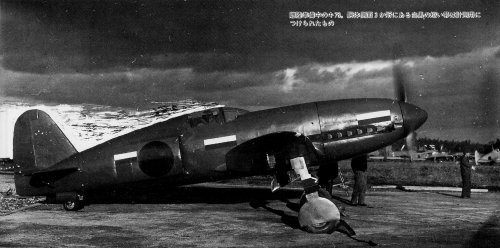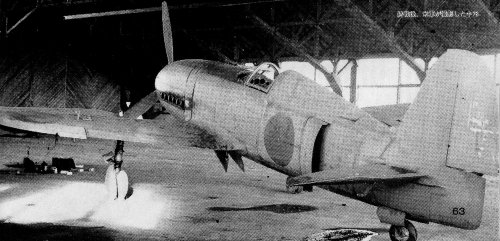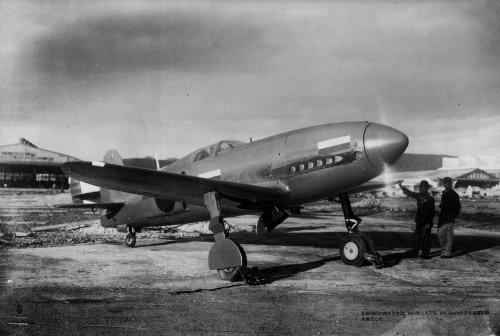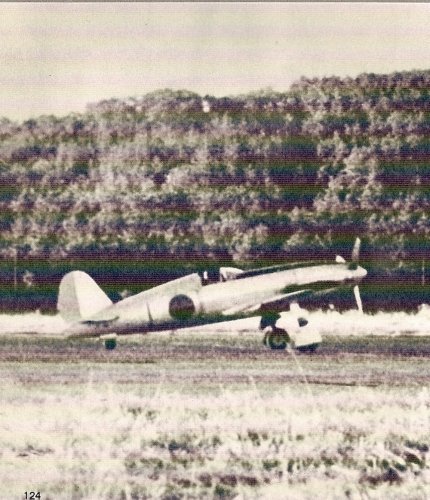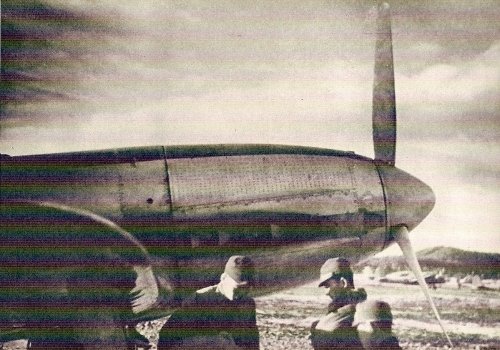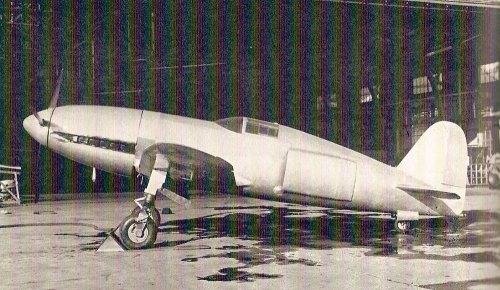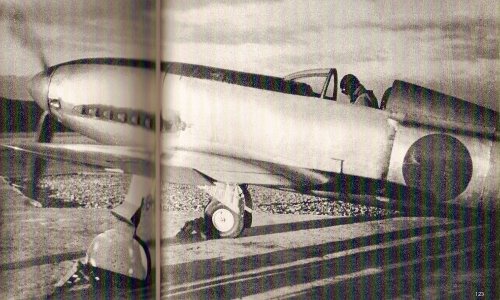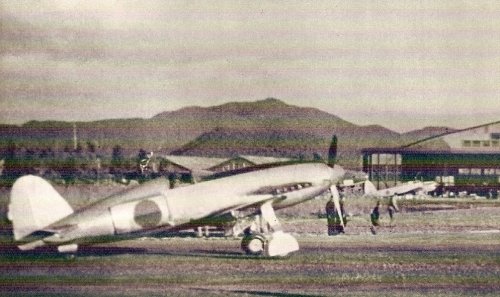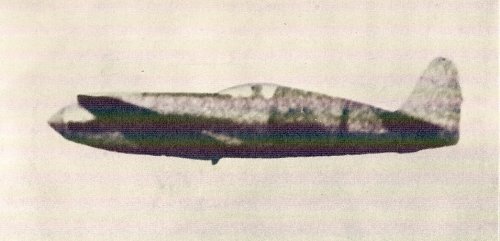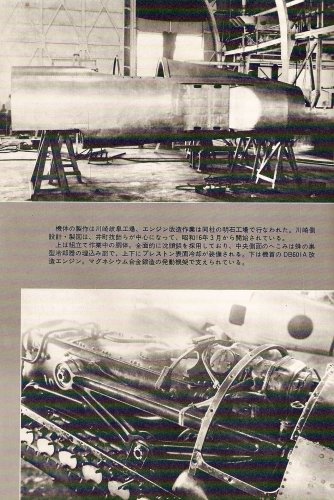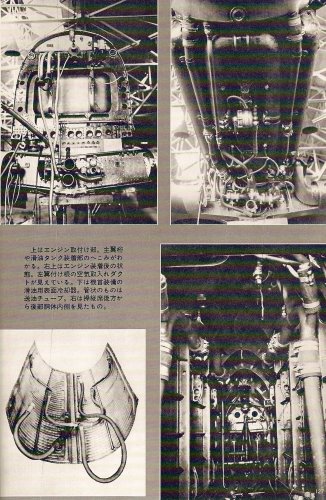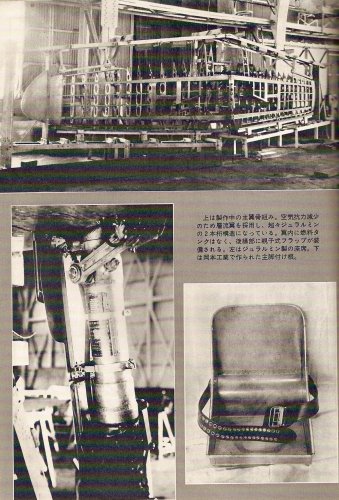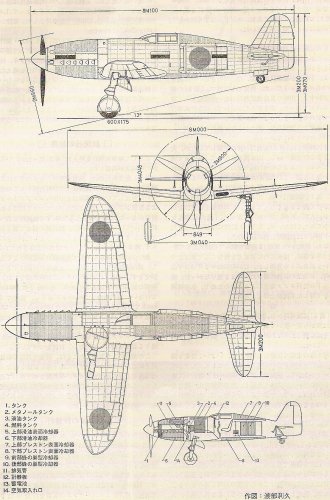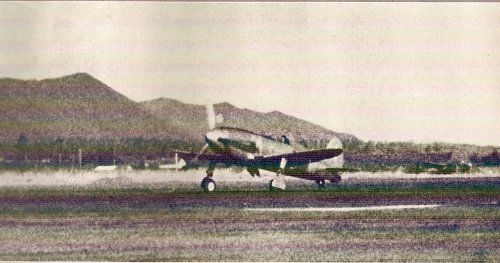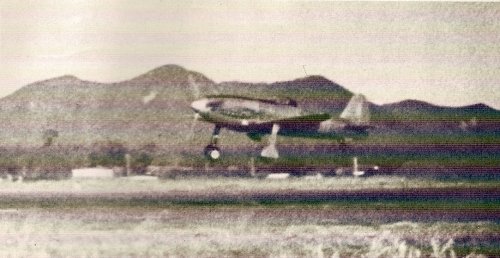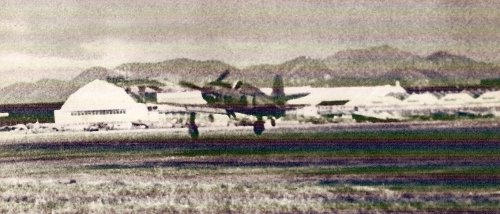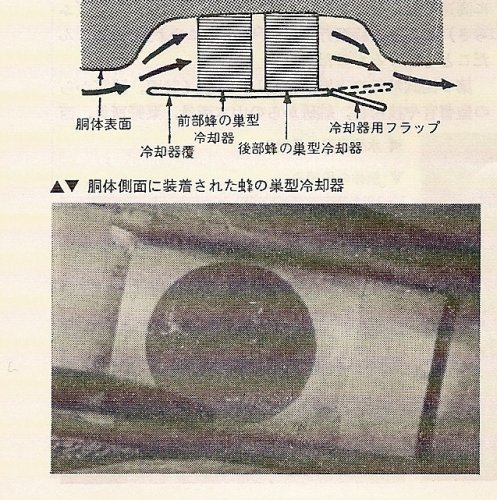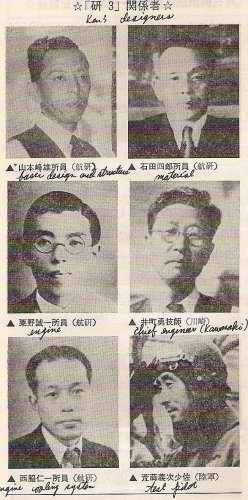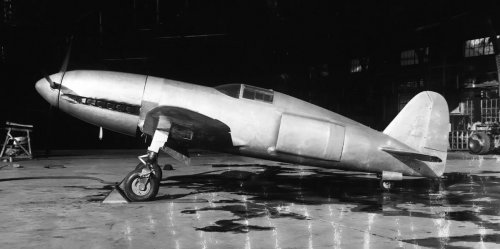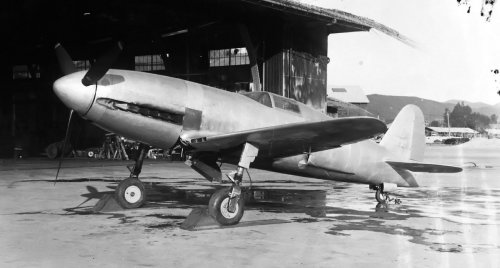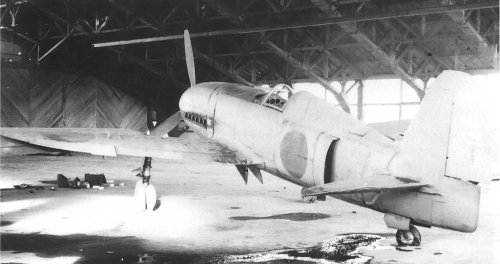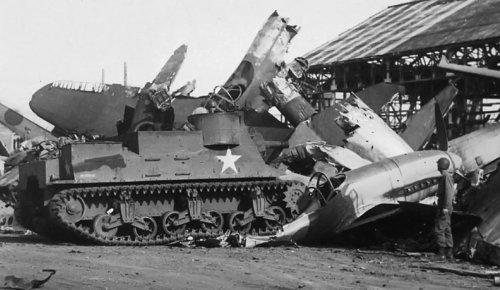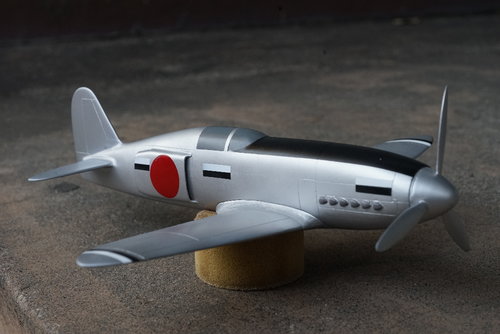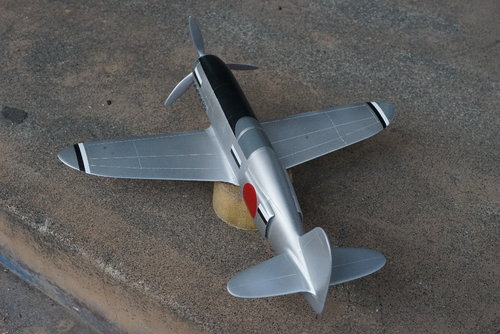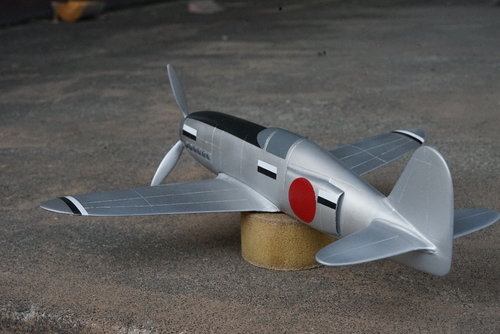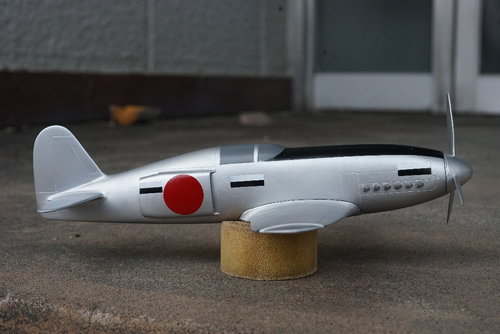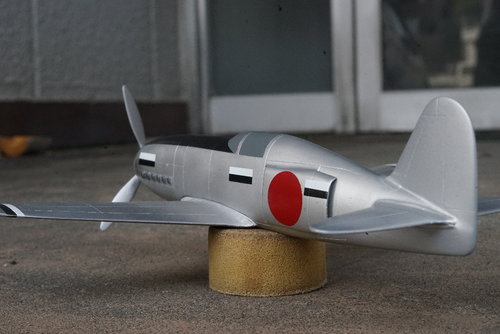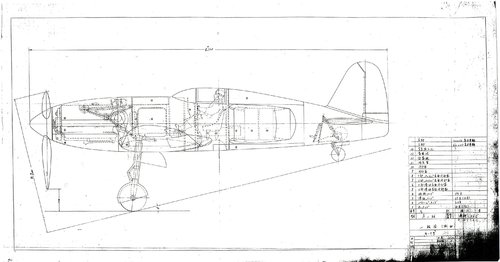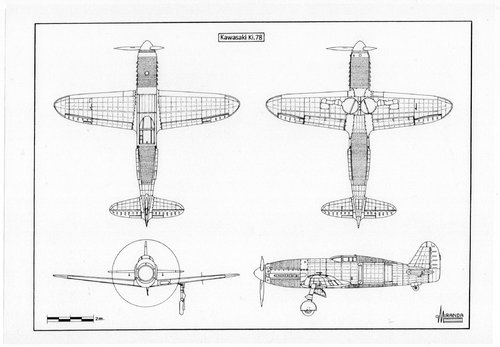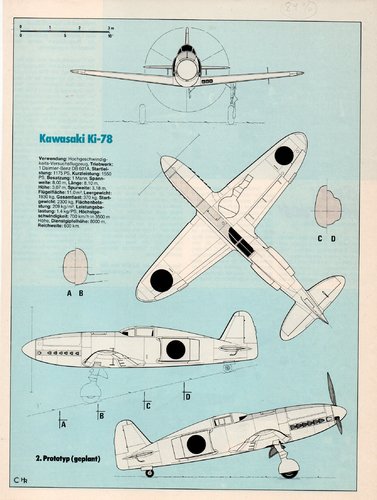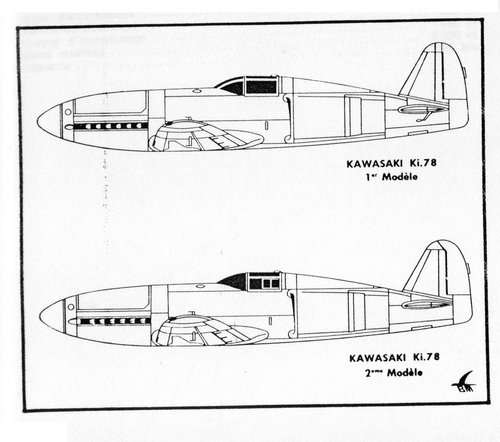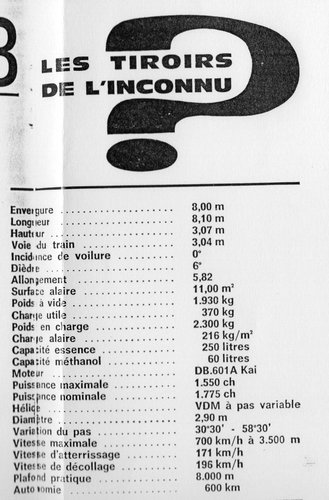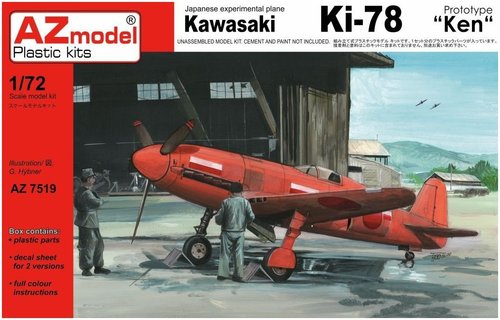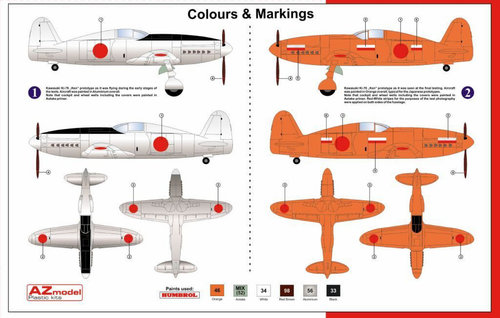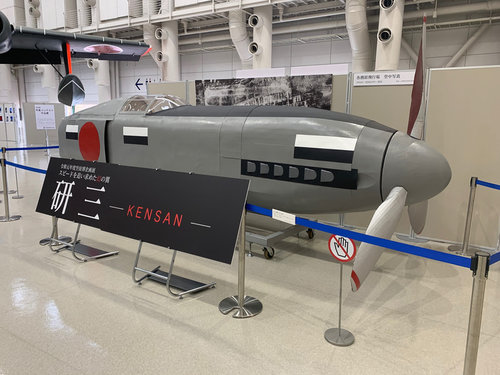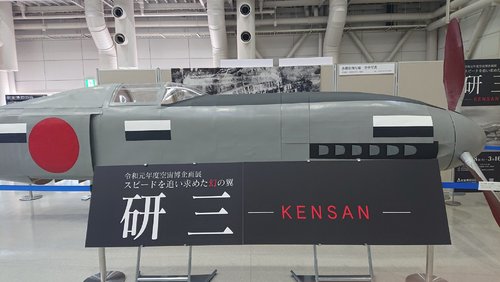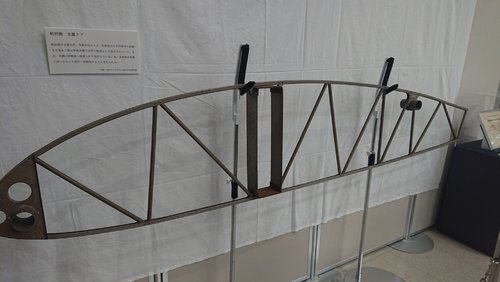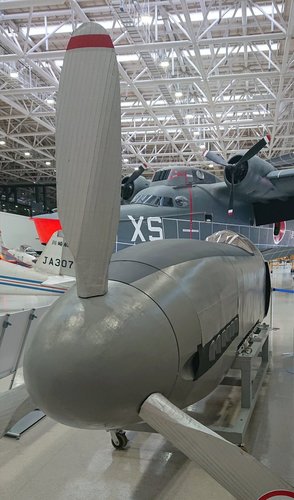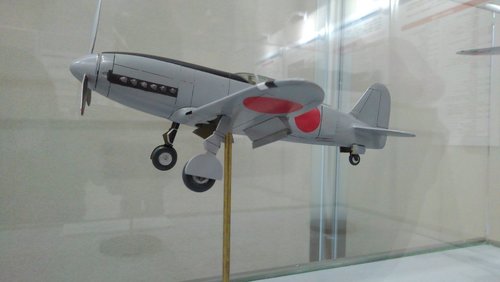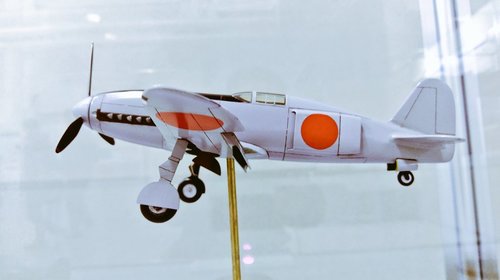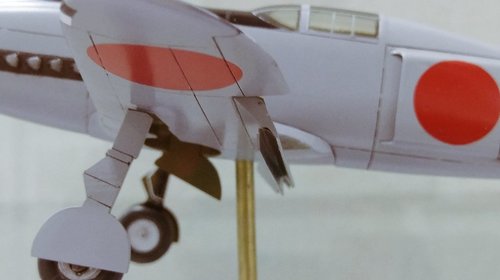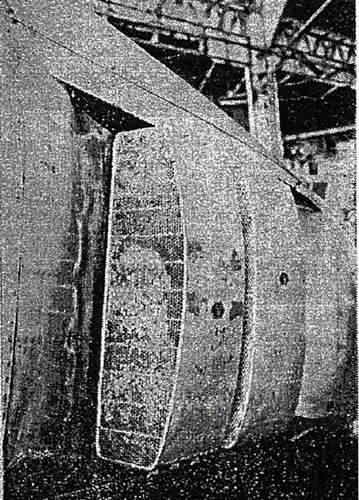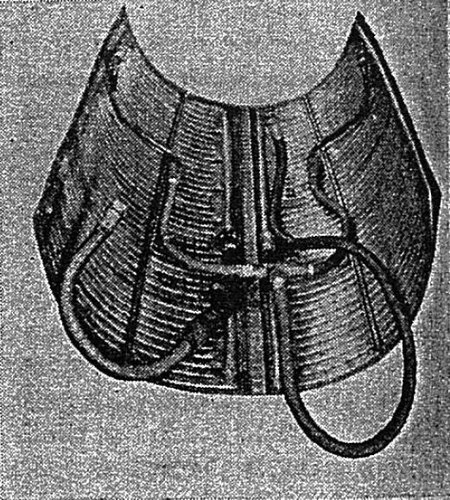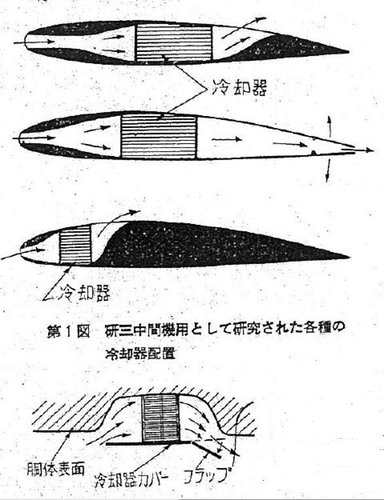You are using an out of date browser. It may not display this or other websites correctly.
You should upgrade or use an alternative browser.
You should upgrade or use an alternative browser.
Kawasaki Ki-78 « Kenzo » ('Ken-3' intermediate aircraft)
- Thread starter hesham
- Start date
J
joncarrfarrelly
Guest
The Ki 78 is a well known Kawasaki project to produce a speed-record aircraft. The design target speed was 850 km/h(528 mph), the fastest speed achieved on test was 699.6 km/h (434.9 mph). The extensive modifications required to meet the original performance target were considered to be too many and flight testing was suspended following the 32nd flight on 11 January, 1944.
Jon
Jon
- Joined
- 26 May 2006
- Messages
- 32,675
- Reaction score
- 11,886
Hi joncarrfarrelly,
The estimated speed to Ki-78 is only a 850 km/h,and I know the
really maximum speed to it.
The Nakajima also designed and submitted a proposal to 20-Shi
for single seat fighter to Navy,(may be A8N),project only.
The Yokosuka designed anther dive bomber after D5Y,but I
don't know its designation (D?Y),it was a single engined two
seat monoplane.
The estimated speed to Ki-78 is only a 850 km/h,and I know the
really maximum speed to it.
The Nakajima also designed and submitted a proposal to 20-Shi
for single seat fighter to Navy,(may be A8N),project only.
The Yokosuka designed anther dive bomber after D5Y,but I
don't know its designation (D?Y),it was a single engined two
seat monoplane.
J
joncarrfarrelly
Guest
Well if you are familiar with the aircraft, then you'd have to agree it doesn't qualify as an 'Unbuilt Aircraft'.
Taranov
ACCESS: Confidential
- Joined
- 23 January 2011
- Messages
- 119
- Reaction score
- 35
Taranov
ACCESS: Confidential
- Joined
- 23 January 2011
- Messages
- 119
- Reaction score
- 35
Alcides said:Taranov this looks more like the ki-78 to me. I'll check.
Yep, my error
Fixed.
theponja
ACCESS: Secret
- Joined
- 5 September 2007
- Messages
- 429
- Reaction score
- 38
Ok. Now I can put some very nice picture from a ki-78 card model buid by a member of www.papermodelers.com forum,
more here: http://www.papermodelers.com/forum/aviation/18074-ki-78-ken-san-krzychu-3.html
more here: http://www.papermodelers.com/forum/aviation/18074-ki-78-ken-san-krzychu-3.html
Attachments
blackkite
Don't laugh, don't cry, don't even curse, but.....
- Joined
- 31 May 2007
- Messages
- 8,297
- Reaction score
- 5,892
blackkite
Don't laugh, don't cry, don't even curse, but.....
- Joined
- 31 May 2007
- Messages
- 8,297
- Reaction score
- 5,892
Hi! 3 side view.
- 1. Tank
- 2. Methyl alcohol(methanol) tank
- 3. Oil tank
- 4. Fuel tank
- 5. Upper oil skin cooler
- 6. Lower oil skin cooler
- 7. Upper ethylene glycol auxiliary skin cooler
- 8. Lower ethylene glycol auxiliary skin cooler
- 9. Front honeycomb shape main cooler
- 10. Aft honeycomb shape main cooler
- 11. Exhaust pipe
- 12. Instrument panel
- 13. Storage battery
- 14. Air inlet
Attachments
blackkite
Don't laugh, don't cry, don't even curse, but.....
- Joined
- 31 May 2007
- Messages
- 8,297
- Reaction score
- 5,892
In fall of 1939, the IJA ordered Tokyo Imperial University Aeronautical Research Institute(航研) to design high speed research aircraft which break world speed record by two stage development strategy. The first stage aircraft was planned as top speed 700km/h class machine which called Ken(研)3 intermediate aircraft(Ken3 No.1 aircraft,(Ki78)). Ken3 was completed in November 1942 by Kawasaki aircraft, the first flight was performed in 26th of December 1942.Japanese speed record 699.9km/h(altitude 3,500m) was made in 27th of December 1943. The engine was modified DB601A(1,550hp/2,550rpm).Ken3 No.2 aircraft(target top speed was 800 to 850km/h) was planned to have H shape 24 cylinders 3,000hp engine or X shape engine and VG wing from observing swallow flying shape(not from theoretical consideration).Ken3 No.2 aircraft did not realized.
Attachments
Hi blackkite san
Imust say these are amazing good pictures very rare in the west! again japanese people have proved to the west theyre capable of designing and building a very advached and beatiful aircraft!
Sick racist in the west in the pre war period were saying japanese people cant build good aircraft,and were only copying opselete western aircraft.
A sick way of thinking! but Pearl made them awake!
a good job you did Blackkite san,keep on the good work!
regards T-50
Imust say these are amazing good pictures very rare in the west! again japanese people have proved to the west theyre capable of designing and building a very advached and beatiful aircraft!
Sick racist in the west in the pre war period were saying japanese people cant build good aircraft,and were only copying opselete western aircraft.
A sick way of thinking! but Pearl made them awake!
a good job you did Blackkite san,keep on the good work!
regards T-50
Johnbr
ACCESS: Top Secret
- Joined
- 6 May 2007
- Messages
- 752
- Reaction score
- 283
One is sad to see.
High-speed flight tests were started in April 1943, and during the Ki-78’s 31st flight on December 27, the aircraft achieved its maximum speed of 434.7 mph (699.6 km/h) at 11,572 ft (3,527 m). This was considerably less than the program’s speed goal of 528 mph (850 km/h). A study showed that extensive airframe modifications were needed to improve the Ki-78 flight performance. Consequently, the project was officially terminated after the aircraft’s 32nd flight on January 11, 1944. Only one prototype was built.
Engine cooling was provided by two radiators: one mounted on each side of the rear fuselage. The radiators had a wide air inlet protruding slightly out from the fuselage. Airflow through each radiator was controlled by an actuated exit door. In addition, within the fuselage a small 60 hp turbine drove a fan to further assist cooling. The aircraft stood 10 ft 7/8 in (3.07 m) tall and weighed 4,255 lb (1,930 kg) empty.
The Ki-78 first flew on December 26, 1942 and was found to be extremely difficult to fly at low speeds and had poor stall characteristics. The aircraft was heavier than the design estimates, which increased the wing loading. Even with the special flaps and drooping ailerons, take-off and landing speeds were both high at 127 mph (205 km/h) and 106 mph (170 km/h) respectively. In addition, elevator flutter was experienced at the relatively low speed of 395 mph (635 km/h) but was subsequently cured by fitting a horn-balance to the elevator
High-speed flight tests were started in April 1943, and during the Ki-78’s 31st flight on December 27, the aircraft achieved its maximum speed of 434.7 mph (699.6 km/h) at 11,572 ft (3,527 m). This was considerably less than the program’s speed goal of 528 mph (850 km/h). A study showed that extensive airframe modifications were needed to improve the Ki-78 flight performance. Consequently, the project was officially terminated after the aircraft’s 32nd flight on January 11, 1944. Only one prototype was built.
Engine cooling was provided by two radiators: one mounted on each side of the rear fuselage. The radiators had a wide air inlet protruding slightly out from the fuselage. Airflow through each radiator was controlled by an actuated exit door. In addition, within the fuselage a small 60 hp turbine drove a fan to further assist cooling. The aircraft stood 10 ft 7/8 in (3.07 m) tall and weighed 4,255 lb (1,930 kg) empty.
The Ki-78 first flew on December 26, 1942 and was found to be extremely difficult to fly at low speeds and had poor stall characteristics. The aircraft was heavier than the design estimates, which increased the wing loading. Even with the special flaps and drooping ailerons, take-off and landing speeds were both high at 127 mph (205 km/h) and 106 mph (170 km/h) respectively. In addition, elevator flutter was experienced at the relatively low speed of 395 mph (635 km/h) but was subsequently cured by fitting a horn-balance to the elevator
Attachments
- Joined
- 11 March 2006
- Messages
- 8,608
- Reaction score
- 3,057
Times were different, historical value wasn't of much interest, there were still a lot of former
enemy aircraft in the pipeline for testing and after 1945 and the Ki-78 already was known
to be tricky to fly and not reaching its expected performance. US test pilots probably were
cheering to the tank crew !
enemy aircraft in the pipeline for testing and after 1945 and the Ki-78 already was known
to be tricky to fly and not reaching its expected performance. US test pilots probably were
cheering to the tank crew !
WJPearce
ACCESS: Confidential
- Joined
- 21 March 2008
- Messages
- 63
- Reaction score
- 36
Hello,
The text and images in the original post appear to have come from an article I wrote on the Kawasaki Ki-78. This is perfectly fine by the way; the reason I write these articles is (to attempt) to further our collective memory of these magnificent machines. However, there is some additional information in my article, and for those who are interested, a direct link to the article is provided below.
http://oldmachinepress.wordpress.com/2012/11/03/kawasaki-ki-78-ken-iii/
I do have a question that I'd like to pose to the forum. Most sources state a 60 hp "turbine" was mounted in the fuselage of the Ki-78 and drove a cooling fan to increase airflow through the radiators. "General View of Japanese Military Aircraft in the Pacific War" differs on this, stating a 60 hp "gas-engine" was used. While I feel that "gas-engine" could have been a miss-translation, it seems all sources agree that there was a separate, fuselage-mounted engine that drove a cooling fan.
I don't see much room for anything in the fuselage of the Ki-78. In addition, I don't see an intake or exhaust for any fuselage mounted engine. I suppose the intake could have been incorporated amongst other intakes in the leading edge of the left wing, or in the radiator scoops themselves, and perhaps exhaust was expelled through some port on the bottom of the aircraft.
Regardless, it is safe to say that this 60 hp, fan-driving, fuselage-mounted engine has me a bit confused. I was wondering if anyone here had any insight of further thoughts on it.
Thank you,
Bill Pearce
The text and images in the original post appear to have come from an article I wrote on the Kawasaki Ki-78. This is perfectly fine by the way; the reason I write these articles is (to attempt) to further our collective memory of these magnificent machines. However, there is some additional information in my article, and for those who are interested, a direct link to the article is provided below.
http://oldmachinepress.wordpress.com/2012/11/03/kawasaki-ki-78-ken-iii/
I do have a question that I'd like to pose to the forum. Most sources state a 60 hp "turbine" was mounted in the fuselage of the Ki-78 and drove a cooling fan to increase airflow through the radiators. "General View of Japanese Military Aircraft in the Pacific War" differs on this, stating a 60 hp "gas-engine" was used. While I feel that "gas-engine" could have been a miss-translation, it seems all sources agree that there was a separate, fuselage-mounted engine that drove a cooling fan.
I don't see much room for anything in the fuselage of the Ki-78. In addition, I don't see an intake or exhaust for any fuselage mounted engine. I suppose the intake could have been incorporated amongst other intakes in the leading edge of the left wing, or in the radiator scoops themselves, and perhaps exhaust was expelled through some port on the bottom of the aircraft.
Regardless, it is safe to say that this 60 hp, fan-driving, fuselage-mounted engine has me a bit confused. I was wondering if anyone here had any insight of further thoughts on it.
Thank you,
Bill Pearce
blackkite
Don't laugh, don't cry, don't even curse, but.....
- Joined
- 31 May 2007
- Messages
- 8,297
- Reaction score
- 5,892
Attachments
blackkite
Don't laugh, don't cry, don't even curse, but.....
- Joined
- 31 May 2007
- Messages
- 8,297
- Reaction score
- 5,892
Ki.78
The Aeronautical Research Institute of the University of Tokyo (Koken) was working since 1938 on the design of an experimental aircraft capable of flying at 850 kph powered by a DB 601 German engine. The project was known as Ken-3, for Kensan (Research), the airframe had been carefully designed with laminar flow wings and one streamlined fuselage made as narrow as possible. One 60 hp auxiliary engine, driving a cooling fan would be installed behind the cockpit to improve the performance of the two ‘P-38 style’ radiators located inside the fuselage.
Following the presentation of the wooden mock-up to the IJA in May 1941, the Ken-3 received the Kitai number Ki.78 and the construction of the prototype began four months later. The Ki.78 was flown on December 1942 powered by one DB 601A-Kai Methanol-water boosted to 1,550 hp, for short periods.
On April 1943, at the same time when the Ki.61-I entered combat over New Guinea, the Ken-3 experimented tailplane flutter at the relatively low speed of 635 kph. The problem was cured fitting a horn-balance to the elevator. Early 1944, the prototype reached a top speed de 704 kph, but the IJA considered that the foreseen 850 kph in the initial design could only be reached with more powerful engines. The construction of the 2nd prototype was cancelled on 11 January 1944.
The high-speed research programme was dropped on 1 February 1945 when Kawasaki stopped the manufacturing of the Ha-140 V-12 engine.
Ki.78 technical data
Wingspan: 8.00 m, length: 8.10 m, height: 3.07 m, wing area: 11.00 sqm, max speed: 704 kph, max weight: 2,300 kg, ceiling: 8,000 m.
The Aeronautical Research Institute of the University of Tokyo (Koken) was working since 1938 on the design of an experimental aircraft capable of flying at 850 kph powered by a DB 601 German engine. The project was known as Ken-3, for Kensan (Research), the airframe had been carefully designed with laminar flow wings and one streamlined fuselage made as narrow as possible. One 60 hp auxiliary engine, driving a cooling fan would be installed behind the cockpit to improve the performance of the two ‘P-38 style’ radiators located inside the fuselage.
Following the presentation of the wooden mock-up to the IJA in May 1941, the Ken-3 received the Kitai number Ki.78 and the construction of the prototype began four months later. The Ki.78 was flown on December 1942 powered by one DB 601A-Kai Methanol-water boosted to 1,550 hp, for short periods.
On April 1943, at the same time when the Ki.61-I entered combat over New Guinea, the Ken-3 experimented tailplane flutter at the relatively low speed of 635 kph. The problem was cured fitting a horn-balance to the elevator. Early 1944, the prototype reached a top speed de 704 kph, but the IJA considered that the foreseen 850 kph in the initial design could only be reached with more powerful engines. The construction of the 2nd prototype was cancelled on 11 January 1944.
The high-speed research programme was dropped on 1 February 1945 when Kawasaki stopped the manufacturing of the Ha-140 V-12 engine.
Ki.78 technical data
Wingspan: 8.00 m, length: 8.10 m, height: 3.07 m, wing area: 11.00 sqm, max speed: 704 kph, max weight: 2,300 kg, ceiling: 8,000 m.
blackkite
Don't laugh, don't cry, don't even curse, but.....
- Joined
- 31 May 2007
- Messages
- 8,297
- Reaction score
- 5,892
Hi!
"I went to the "Kensan" exhibition of the Gifu Kakagamihara Air and Space Museum. A full-scale model of the main body was on display."
(7th of February 2020)
"I went to the "Kensan" exhibition of the Gifu Kakagamihara Air and Space Museum. A full-scale model of the main body was on display."
(7th of February 2020)
Attachments
Last edited:
blackkite
Don't laugh, don't cry, don't even curse, but.....
- Joined
- 31 May 2007
- Messages
- 8,297
- Reaction score
- 5,892
Hi! Kensan design report by Mineo Yamamoto.
I will translate this Kensan Japanese design report(pdf) by chief designer into English.
I will translate this Kensan Japanese design report(pdf) by chief designer into English.
Attachments
Last edited:
blackkite
Don't laugh, don't cry, don't even curse, but.....
- Joined
- 31 May 2007
- Messages
- 8,297
- Reaction score
- 5,892
Tanks and coolers in the fuselage.
1. Tank 2. Methanol tank 3. Oil tank 4. Fuel tank 5. Upper oil surface cooler
6. Lower oil surface cooler 7. Upper Prestone surface cooler 8. Lower Prestone surface cooler
9. Embedded Prestone cooler 10. Embedded Prestone cooler 11. Exhaust pipe
12. Instrument panel 13. Battery 14. Engine air intake

1. Tank 2. Methanol tank 3. Oil tank 4. Fuel tank 5. Upper oil surface cooler
6. Lower oil surface cooler 7. Upper Prestone surface cooler 8. Lower Prestone surface cooler
9. Embedded Prestone cooler 10. Embedded Prestone cooler 11. Exhaust pipe
12. Instrument panel 13. Battery 14. Engine air intake
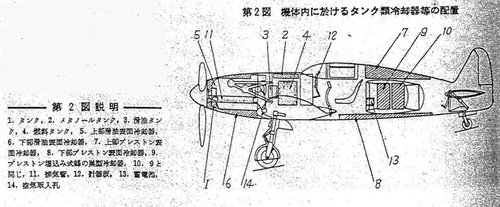
Last edited:
blackkite
Don't laugh, don't cry, don't even curse, but.....
- Joined
- 31 May 2007
- Messages
- 8,297
- Reaction score
- 5,892
Hi! Kensan prestone cooler candidates. Bottom drawing shows the final design.
Kensan was an airplane that leaks prestone from somewhere,
It was like being pulled out of the water.
When the engine was operated on the ground, it immediately overheats. Therefore, the engine was operated while watering the cooler with a hose same as Hien on the ground.
Kensan was an airplane that leaks prestone from somewhere,
It was like being pulled out of the water.
When the engine was operated on the ground, it immediately overheats. Therefore, the engine was operated while watering the cooler with a hose same as Hien on the ground.
Attachments
Last edited:
windswords
ACCESS: Secret
- Joined
- 19 May 2009
- Messages
- 387
- Reaction score
- 193
When the engine was operated on the ground, it immediately overheats. Therefore, the engine was operated while watering the cooler with a hose same as Hien on the ground.
That is most interesting. I had never read that before about the Ki-61 Hien. In all of the English publications and internet articles there is no mention of the Ha-40 engine overheating on the ground.
Is this overheating while on the ground stated in more than one Japanese source?
blackkite
Don't laugh, don't cry, don't even curse, but.....
- Joined
- 31 May 2007
- Messages
- 8,297
- Reaction score
- 5,892
I doubt P-51 engine overheat when engine test run on the ground,too.
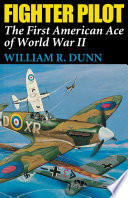
Fighter Pilot
This WWII fighter pilot memoir recounts the authorâs many exploits as a flying ace during WWII in the Normandy invasions, the Battle for France and beyond. Born in Minneapolis in 1916, William R. Dunn decided to become a fighter pilot at the age of twelve. In 1939 he joined the Canadian Army...
books.google.co.jp
Last edited:
Similar threads
-
-
-
Kawasaki Ki-119 Experimental Fighter-Bomber
- Started by blackkite
- Replies: 12
-
Nakajima Ki-62 (competitor to the Kawasaki Ki-61 « Hien »)
- Started by T-50
- Replies: 16
-


